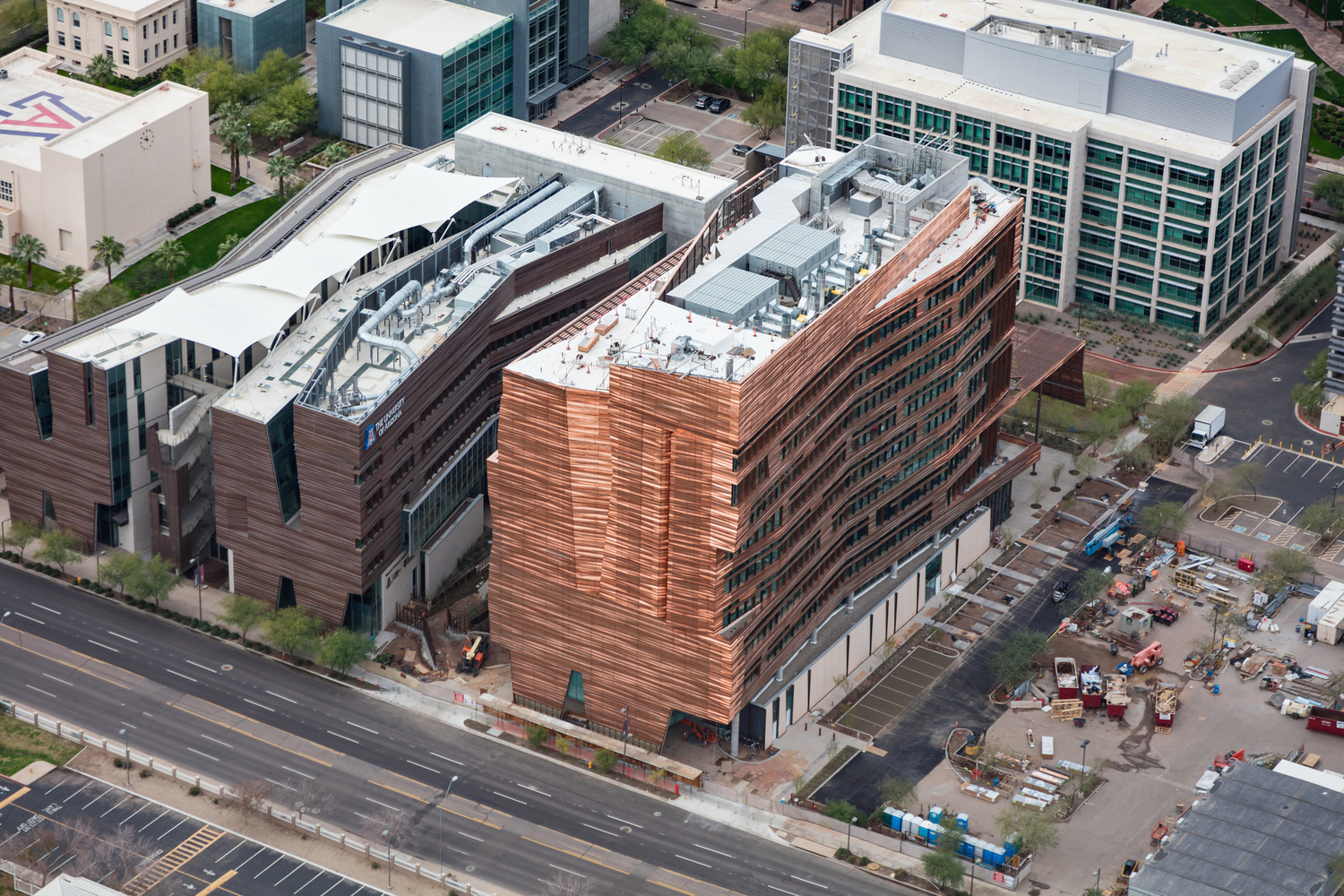
After almost two years of construction, a brilliant new copper building is welcoming its first occupants in Downtown Phoenix. While the Sundt joint venture has almost a year’s worth of work remaining, the $136 million University of Arizona Biomedical Sciences Partnership Building (BSPB) is starting to fulfill its mission of finding cures and saving lives.
The 245,000-square-foot building is the latest addition to a growing Phoenix Biomedical Campus, a 15-year-old city initiative bringing bioresearch and education to downtown. This is Sundt’s fourth project on the campus, including the neighboring Health Sciences Education Building (HSEB), which sits in the BSPB’s long shadow. The 268,000-square-foot HSEB is shared by the University of Arizona College of Medicine-Phoenix, the UA College of Pharmacy, and the Mel and Enid Zuckerman College of Public Health, as well as by Northern Arizona University’s College of Health and Human Services programs.
BSPB is bringing together scientists and researchers from across many disciplines to work collaboratively in fighting diseases. The first researchers are moving in on the fifth and sixth floors while the construction team builds out the 10th floor. That space was originally designed as shell.
The Center for Applied Nanoscience and Biomedicine will be headquartered in the building. Its researchers are making cutting-edge discoveries, such as the Rapid DNA test, which detects early-stage bacterial infections.
Our work and that of other contractors, including our joint-venture partner DPR Construction, on the campus has given Phoenix valuable international attention in the biosciences field. The many advancements made on campus will improve the human condition.
“The Phoenix Biomedical Campus has grown into the foundation for Arizona’s growing biomedical industry and helped to put the region on the national map as a cutting-edge center for research and medical collaboration,” Phoenix Vice Mayor Kate Gallego told the Phoenix Business Journal. “It’s exciting to have Phoenix at the center of some of our most promising treatments to emerge in years for chronic and deadly diseases.”